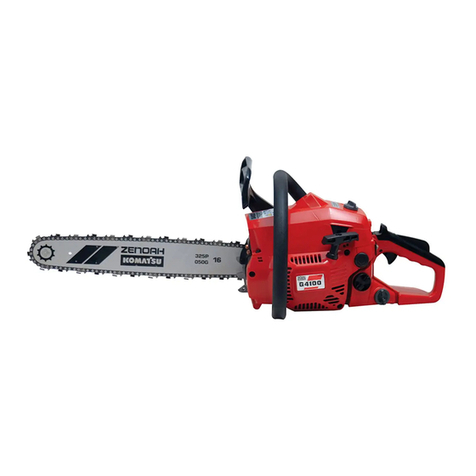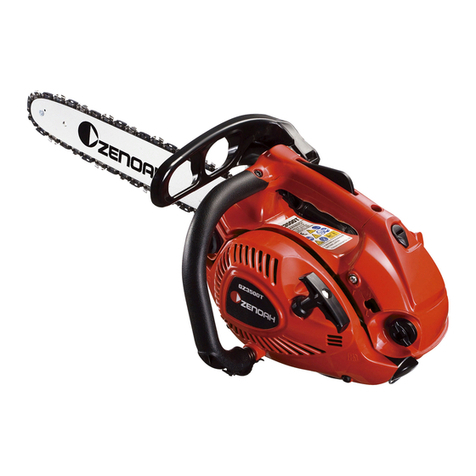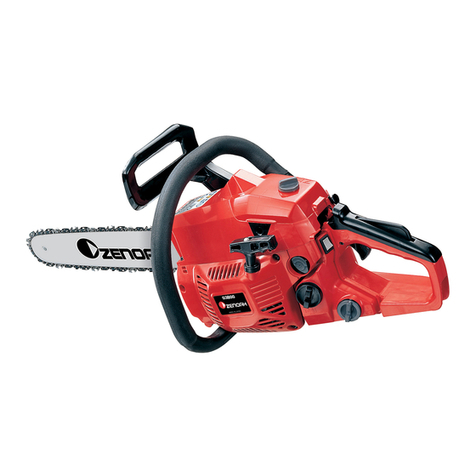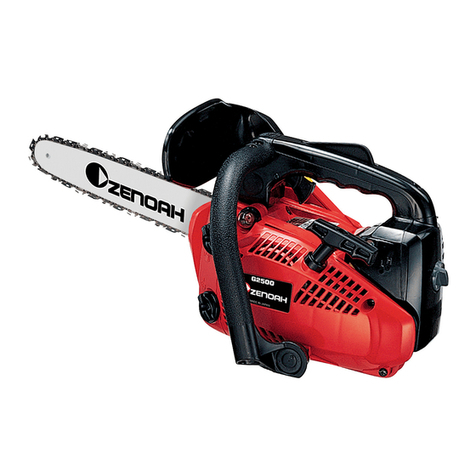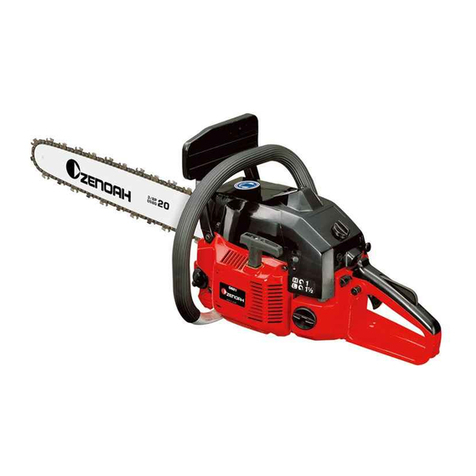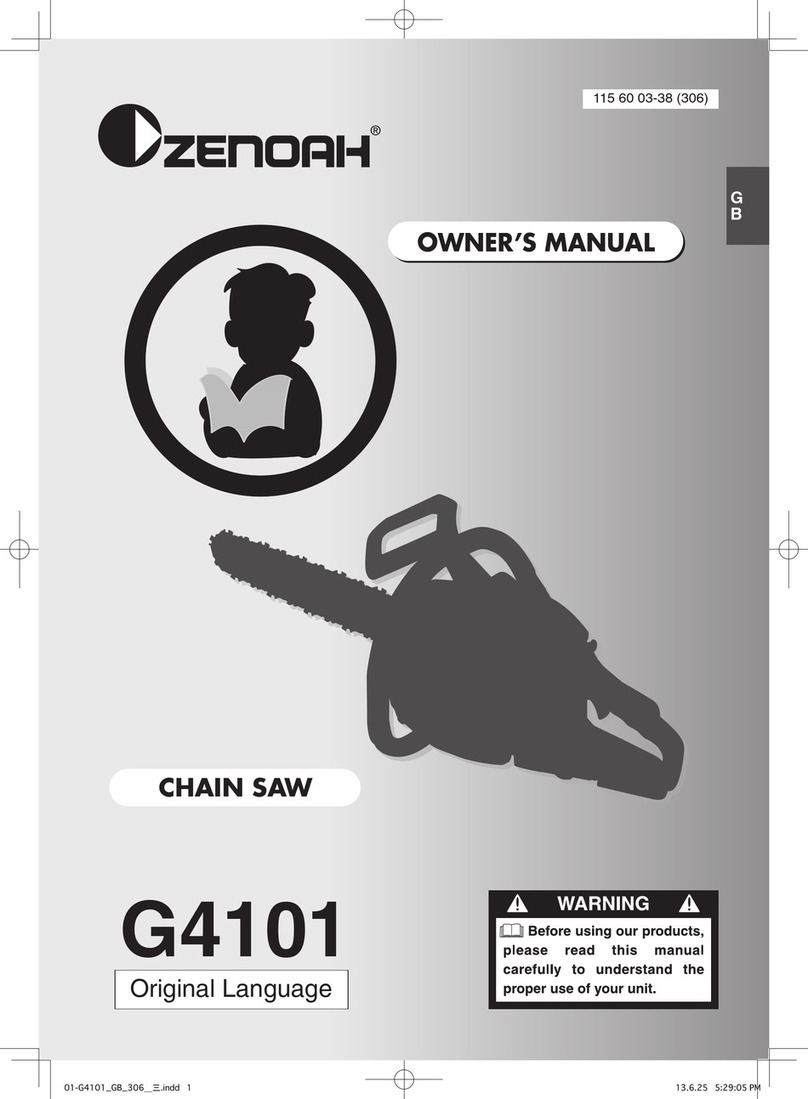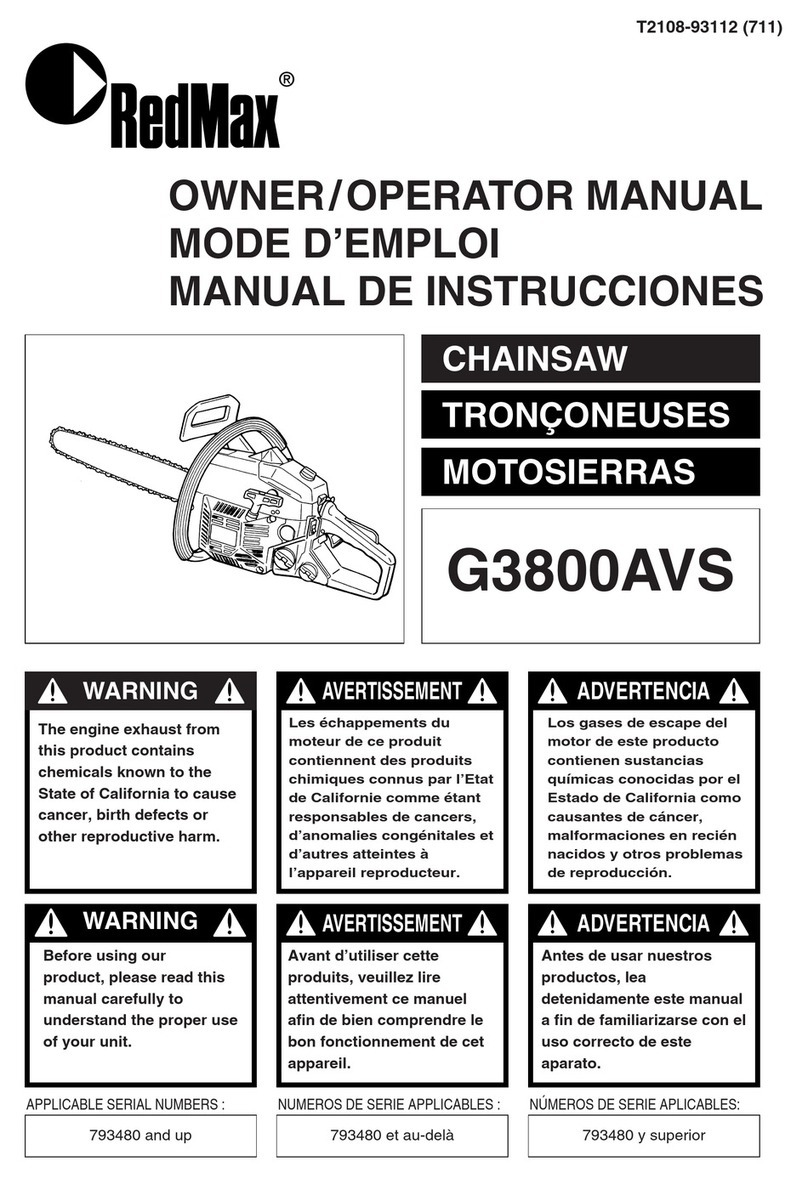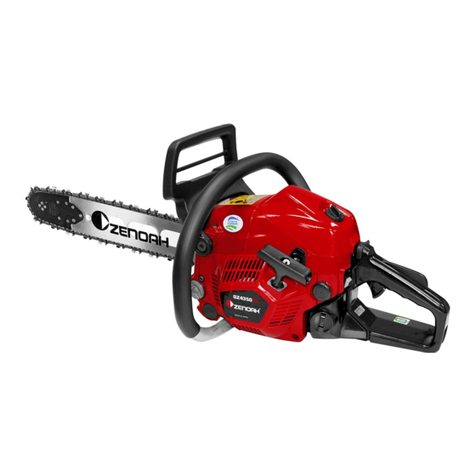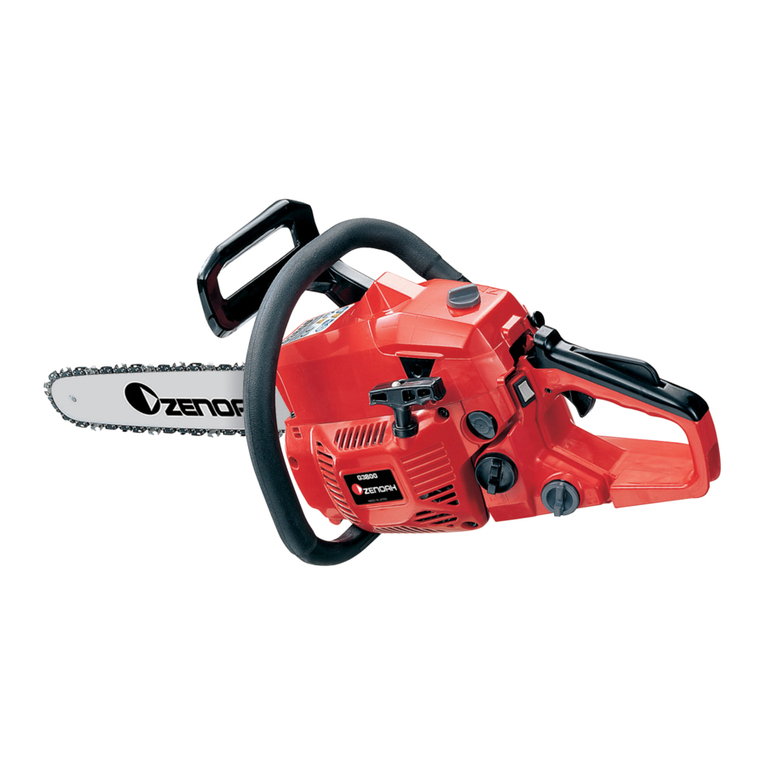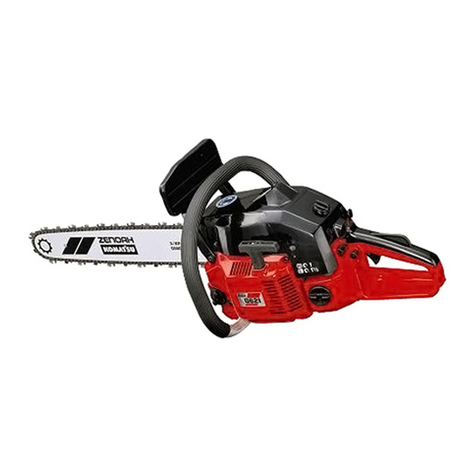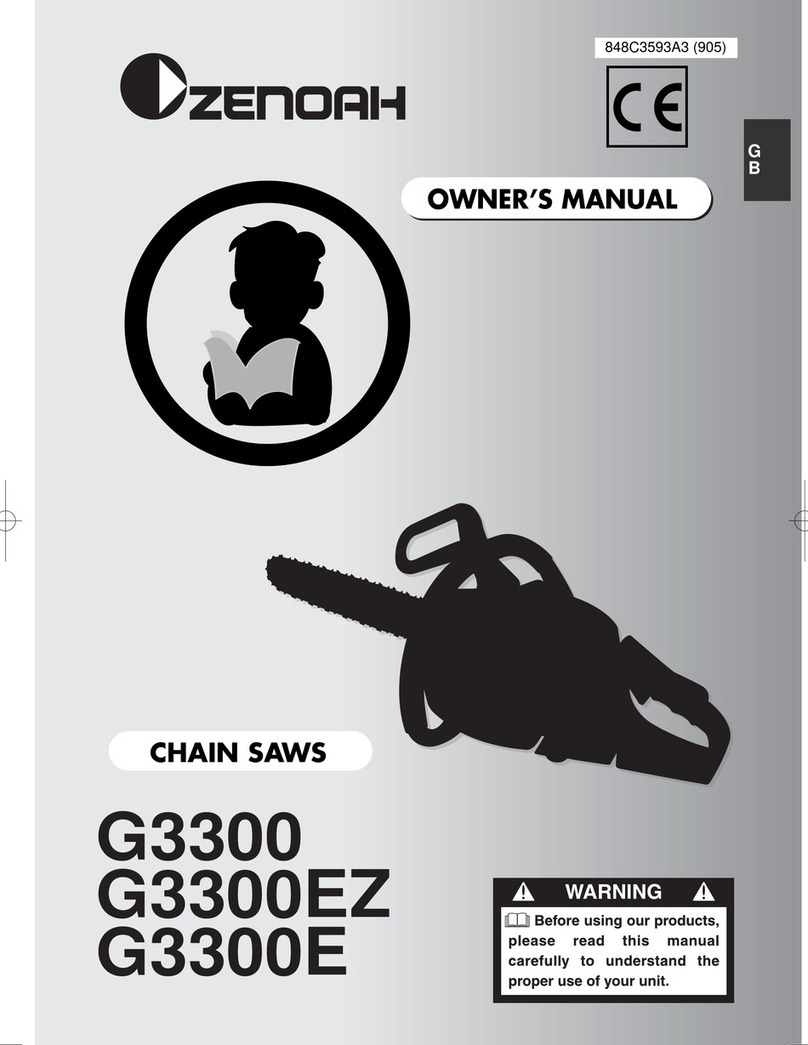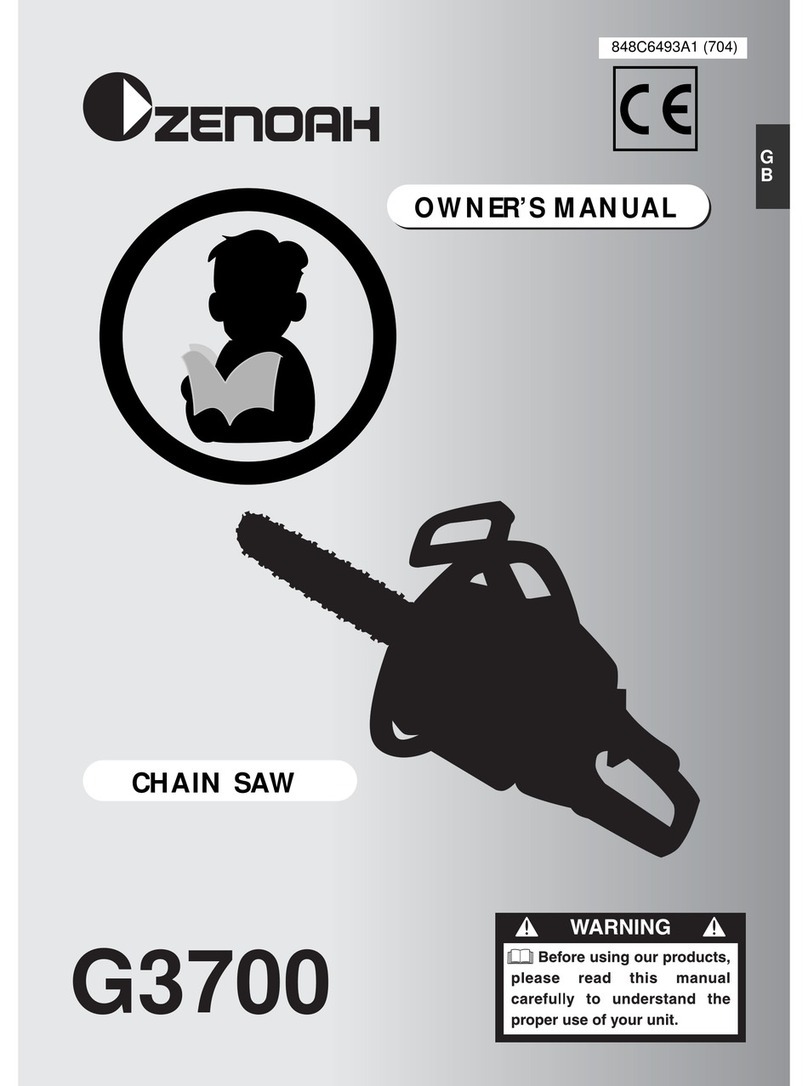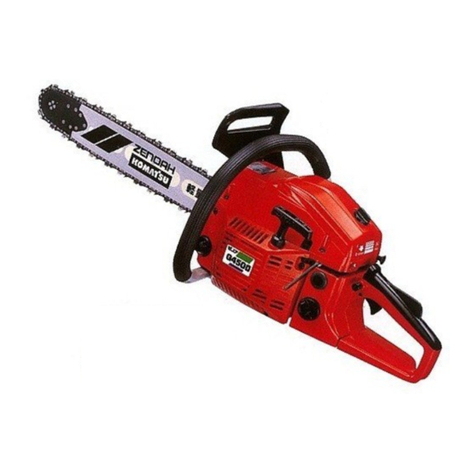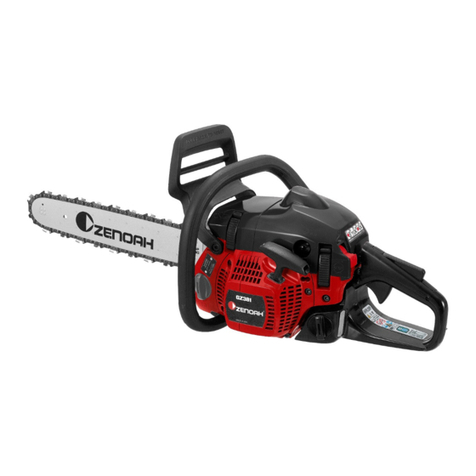7. Fuel and Chain Oil
■Fuel
WARNING
• Gasoline is very flammable. Avoid smoking or bringing
any flame or sparks near fuel. Make sure to stop the engine
and allow it cool before refueling the unit. Select outdoor
bare ground for fueling and move at least 3 m (10 ft) away
from the fueling point before starting the engine.
• TheZenoah engines arelubricated by oilspecially formu-
lated for air-cooled 2-cycle gasoline engine use. If Zenoah oil
is not available, use an anti-oxidant added quality oil ex-
pressly labeled for air-cooled 2-cycle engine use (JASO FD
GRADE OIL or ISO-L-EGD GRADE).
• DonotuseBIAorTCW(2-strokewater-coolingtype)mixed
oil.
■RECOMMENDED MIXING RATIO
GASOLINE 50 : OIL 1
<when using ZENOAH genuine oil>
(JASO FD GRADE OIL or ISO-L-EGD GRADE)
• Exhaust emission are controlled by the fundamental en-
gine parameters and components (eq., carburation, igni-
tion timing and port timing) without addition of any major
hardware or the introduction of an inert material during
combustion.
• Theseengines are certied to operate onunleaded gaso-
line.
• Makesuretousegasolinewithaminimumoctanenumberof
89RON (USA/Canada: 87AL).
• Ifyouuseagasolineofaloweroctanevaluethanprescribed,
there is a danger that the engine temperature may rise and
an engine problem such as piston seizing may consequent-
ly occur.
• Unleadedgasolineisrecommendedtoreducethecontamina-
tion of the air for the sake of your health and the environ-
ment.
• Poorqualitygasolinesoroilsmaydamagesealingrings,fuel
lines or fuel tank of the engine.
■HOW TO MIX FUEL
WARNING
•Payattentiontoagitation.
1. Measure out the quantities of gasoline and oil to be mixed.
2. Put some of the gasoline into a clean, approved fuel con-
tainer.
3. Pour in all of the oil and agitate well.
4. Pour in the rest of gasoline and agitate again for at least one
minute.Assomeoilsmaybedifculttoagitatedepending
on oil ingredients, sufcient agitation is necessary for the
enginetolastlong.Becarefulthat,iftheagitationisinsuf-
cient, there is an increased danger of early piston seizing
due to abnormally lean mixture.
5. Put a clear indication on the outside of the container to avoid
mixing up with gasoline or other containers.
6. Indicate the contents on outside of container for easy iden-
tication.
■FUELING THE UNIT
1. Untwist and remove the fuel cap. Rest the cap on a dustless
place.
2. Put fuel into the fuel tank to 80% of the full capacity.
3. Fasten the fuel cap securely and wipe up any fuel spillage
around the unit.
WARNING
1. Select bare ground for fueling.
2. Move at least 10 feet (3 meters) away from the fueling point
before starting the engine.
3. Stop the engine before refueling the unit. At that time, be
sure to sufciently agitate the mixed gasoline in the con-
tainer.
■FOR YOUR ENGINE LIFE, AVOID:
1. FUEL WITH NO OIL (RAW GASOLINE) – It will cause severe
damage to the internal engine parts very quickly.
2. GASOHOL – It can cause deterioration of rubber and/or
plastic parts and disruption of engine lubrication.
3. OIL FOR 4-CYCLE ENGINE USE – It can cause spark plug
fouling, exhaust port blocking, or piston ring sticking.
4. Mixed fuels which have been left unused for a period of
one month or more may clog the carburetor and result in
the engine failing to operate properly.
5. In the case of storing the product for a long period of time,
clean the fuel tank after rendering it empty. Next, activate the
engine and empty the carburetor of the composite fuel.
6. In the case of scrapping the used mixed oil container, scrap
it only at an authorized repository site.
NOTE
As for details of quality assurance, read the description in the
section Limited Warranty carefully. Moreover, normal wear and
changeinproductwithnofunctionalinuencearenotcovered
by the warranty. Also, be careful that, if the usage in the instruc-
tion manual is not observed as to the mixed gasoline, etc. de-
scribed therein, it may not be covered by the warranty.
■Supplying chain oil
WARNING
Running the equipment for long hours with its chain oil run out
will accelerate the wear and tear of the chain and guide bar,
possibly resulting further in a chain cut and even in a fatal ac-
cident leading to death.
1. Forchainoil,useatypethatissufcientlyviscousandad-
equately lubricating under the summer-use conditions and
another type that shows similar performance under the
winter-use conditions.
2. The use of Zonoah genuine chain oil is recommended to
make your chain saws last as long as possible. If no genu-
ine chain oil is available, please use commercially available
chain oil, which is commonly used.
Caution
Using waste oil, recycled oil, or anything similar causes a break-
down and also proves harmful to the human body and environ-
ment. Please do not under any circumstances use any such
material.
IMPORTANT
Use chain oil of vegetable origin. Before storing it for a long
period, remove the chain oil from the blade and chain groove
and clean them. If not, the chain may become rusted. Chain
rust will cause the chain to become rigid or to become viscous
at the tip.

